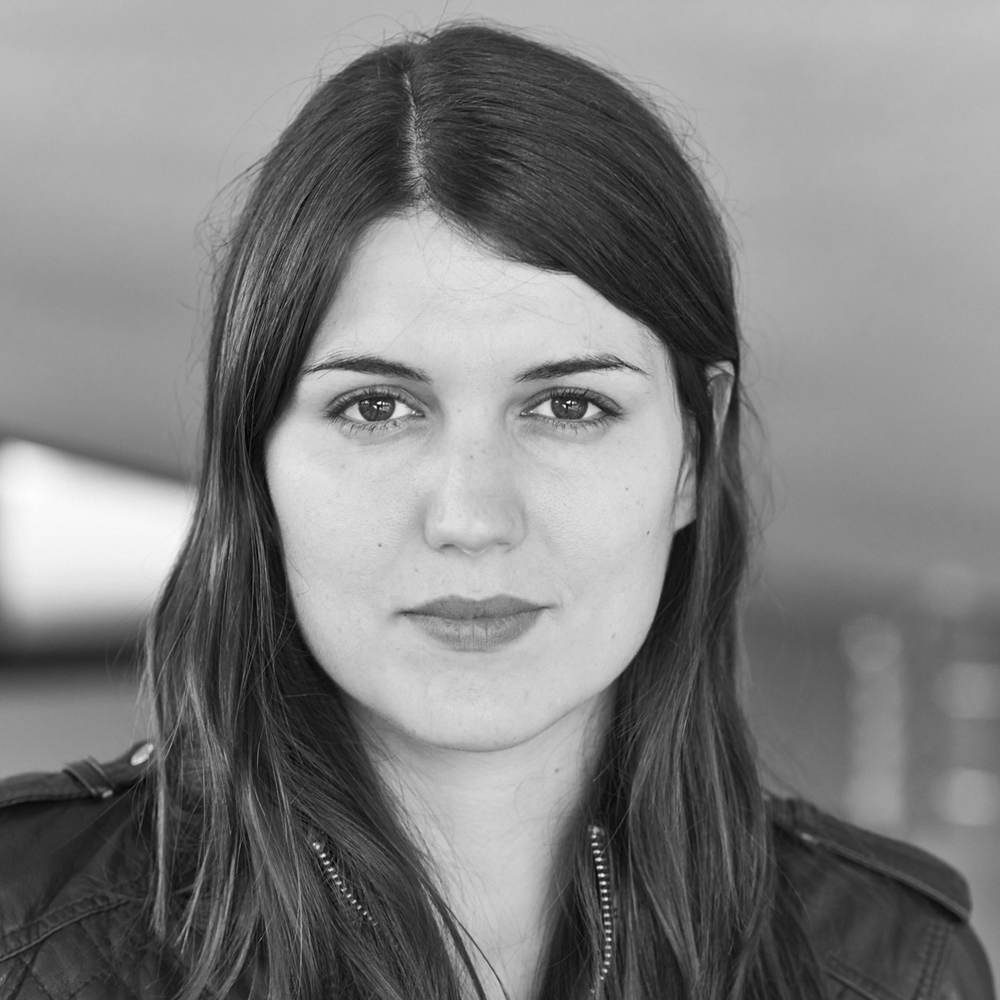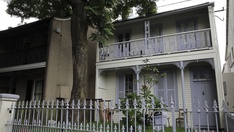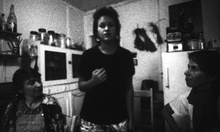Alex Martinis Roe
Berlin
2017
Displayed 2017 at Art Gallery of New South Wales

Alex Martinis Roe
Born 1982, Melbourne. Lives and works Berlin
Alex Martinis Roe explores feminist genealogies and seeks to foster specific and productive relationships between different generations as a way of participating in the construction of feminist histories and futures. This involves developing research and storytelling methodologies that employ non-linear understandings of time, respond to the specific practices of different communities, experiment with the set-up of discursive encounters and imagine how these entanglements can inform new political practices. In addition, she explores these methodological concerns in collaboration with theorist Melanie Sehgal and a research group called FORMATIONS, which began in 2015 within the framework of the Haus der Kulturen der Welt, Berlin.
Artist text
by Susan Gibb
Since 2014, the Melbourne-born, Berlin-based artist Alex Martinis Roe has been tracing a particular genealogy of feminist political practices through the production of six film installations under the series title To Become Two (2014–17). Each film narrates a history related to a specific locale and all are linked by a shared relationship to ‘sexual difference’ and ‘feminist new materialist’ theories and their translation into other forms of political practice. The histories recounted encompass the Milan Women’s Bookstore Collective, Psychanalyse et Politique in Paris, Women’s Studies at Utrecht University (now Gender Studies), and a milieu in Barcelona including Duoda and Ca la Dona. Within this lineage, Martinis Roe’s three-channel video installation It was about opening the very notion that there was a particular perspective (2015–17) narrates a number of cultural movements and events that occurred in Sydney during the 1970s and 80s through a network of people who were part of Feminist Film Workers, the Sydney Filmmaker’s Cooperative and with connections to General Philosophy at the University of Sydney.
At the heart of Martinis Roe’s film is the Philosophy Strike, which occurred in 1973 at the University of Sydney after a proposal by two PhD candidates to teach a course called ‘Philosophical Aspects of Feminist Thought’ was rejected. Of particular interest to Martinis Roe was the alliance that formed between the teachers and students and the Builders Labourers Federation. The successful pressure of the strike resulted in the splitting of the department and the establishment of General Philosophy at the university. For Martinis Roe, this restructuring of the philosophy department created a precedent for restructuring institutions of knowledge production in a transdisciplinary way as part of the wider social movement of the time. Her film also reflects on the subsequent influence of Australian theorists who emerged during this period, such as Elizabeth Grosz, Rosi Braidotti and Vicki Kirby, and traces the way the same ideas were taken up by feminist filmmakers involved with the Feminist Film Workers and Sydney Filmmakers Cooperative. She recounts how Grosz allowed some philosophy students to submit unconventional essays including films and opened her classes to the public, allowing many filmmakers to attend.
Adopting video as her own aesthetic medium and utilising its capacity to play with the structure of time, Martinis Roe tells this history across the video’s multiple channels using a combination of archival footage, contemporary documentation and oral history interviews. She employs a narrated voiceover in one; a compilation of film excerpts by Australian feminist filmmakers, Helen Grace’s Serious Undertakings (1983), Margot Nash’s Shadow Panic (1989) and Pat Fiske’s Rocking the Foundations (1985), in another; and, in the third, a filmic meditation on the architecture within which these events occurred, which, in this instance, Martinis Roe discovered were mostly domestic houses set up in the group housing movement.
Scanning the exterior architecture of these places and archival materials contemporaneously, Martinis Roe’s work is characterised by a certain futurity, a looking back to think forward. During The National 2017: New Australian Art the film will extend to a series of workshops that connect contemporary audiences with this history, creating a space where politics can be enacted through a practice of doing and a shared future can be imagined while acknowledging differences among generations.

